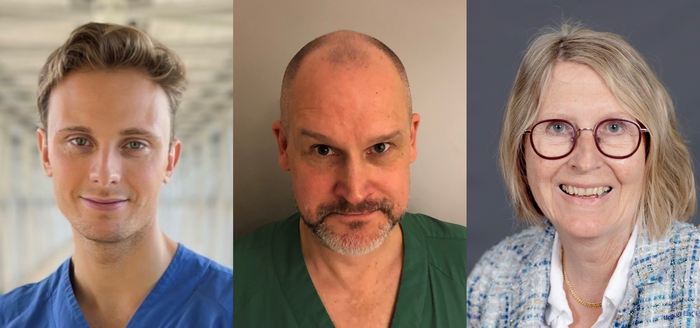Regular physical activity and exercise may reduce bleeding in individuals with intracerebral hemorrhage, a University of Gothenburg study shows. The researchers emphasize the importance of physical activity to protect the brain.

Credit: Photo by University of Gothenburg
Regular physical activity and exercise may reduce bleeding in individuals with intracerebral hemorrhage, a University of Gothenburg study shows. The researchers emphasize the importance of physical activity to protect the brain.
The study, published in the journal Stroke and Vascular Neurology, analyzed data on 686 people treated for intracerebral hemorrhage at Sahlgrenska University Hospital in Gothenburg during the years 2014 to 2019.
The results are based on a retrospective analysis. Causal connections cannot be identified, but the findings are nonetheless clear: Those who reported regular physical activity had smaller hemorrhages than those who reported being inactive.
Physically active was defined as engaging in at least light physical activity, such as walking, cycling, swimming, gardening, or dancing, for at least four hours weekly.
50 percent less bleeding volume
The main author of the study is Adam Viktorisson, a PhD student in clinical neuroscience at Sahlgrenska Academy, University of Gothenburg, and doctor in general practice at Sahlgrenska University Hospital.
“We found that individuals who engage in regular physical activity had, on average, bleeding volumes that were 50 percent smaller upon arriving to the hospital. A similar connection has previously been seen in animal studies, but no prior study has demonstrated this in humans.”
Everyone who comes to the hospital with a suspected intracerebral hemorrhage undergoes a computerized tomography (CT) scan of the brain. Depending on the severity of the hemorrhage, neurosurgery may be required. However, in most cases, non-surgical methods and medications are used to manage symptoms and promote patient recovery.
Intracerebral hemorrhage is the most dangerous type of stroke and can lead to life-threatening conditions. The risk of severe consequences from the hemorrhage increases with the extent of the bleeding.
“In cases of major intracerebral hemorrhages, there is a risk of increased pressure within the skull that can potentially lead to fatal outcomes” says Thomas Skoglund, associate professor of neurosurgery at the University of Gothenburg, neurosurgeon at the University Hospital, and one of the study’s co-authors.
Better understanding of intracerebral hemorrhages
The findings were significant regardless of the location within the cerebrum. Physically active individuals exhibited reduced bleeding in both the deep regions of the brain, which are often associated with high blood pressure, and the surface regions, which are linked to age-related conditions like dementia.
The study creates scope for further research on intracerebral hemorrhages and physical activity. Katharina Stibrant Sunnerhagen, professor of rehabilitation medicine at the University of Gothenburg and senior consultant physician at Sahlgrenska University Hospital, oversees the study.
“We hope that our findings contribute to a deeper understanding of intracerebral hemorrhages and aid in the development of more effective preventive measures” she concludes.
Journal
Stroke and Vascular Neurology
DOI
10.1136/svn-2023-002316
Method of Research
Data/statistical analysis
Subject of Research
People
Article Title
Prestroke physical activity is associated with admission haematoma volume and the clinical outcome of intracerebral haemorrhage
Article Publication Date
3-May-2023




